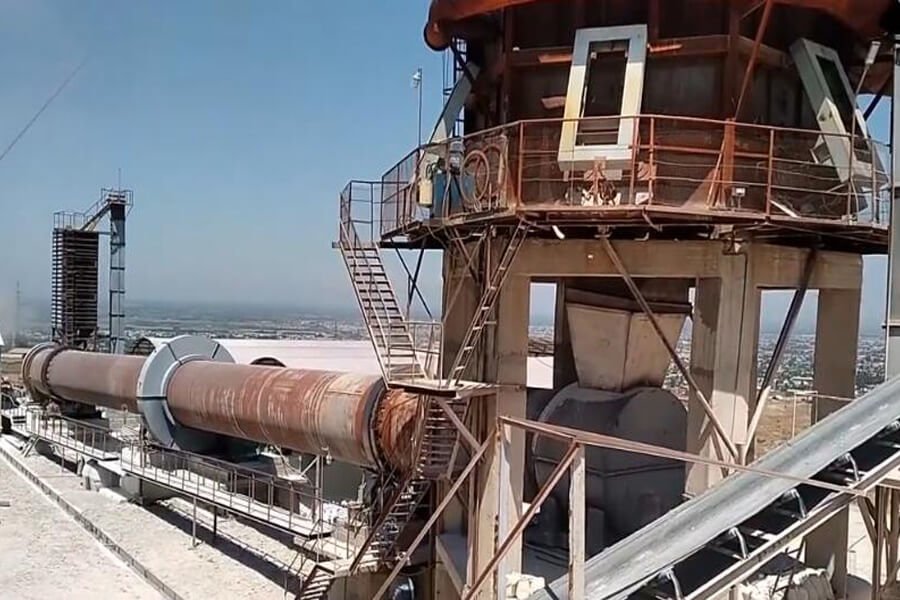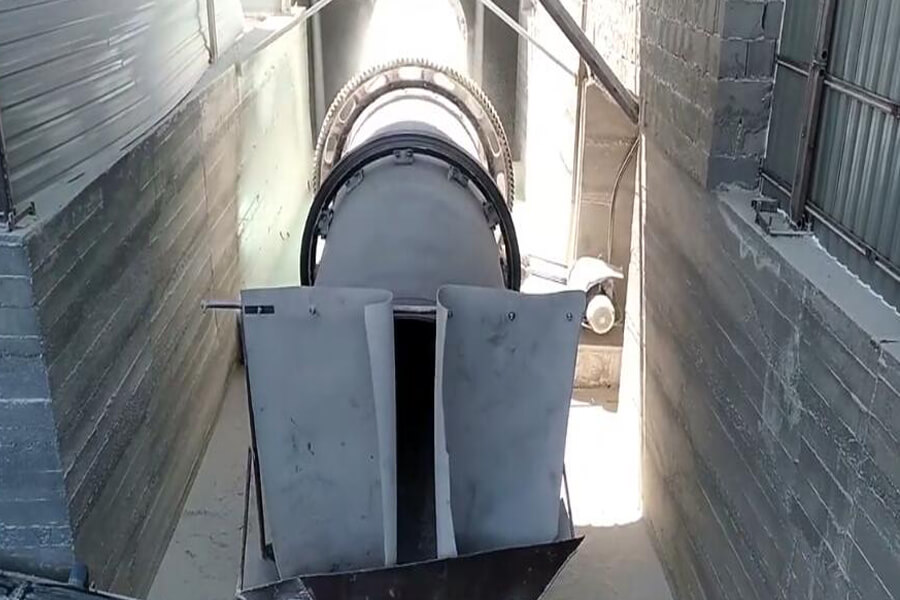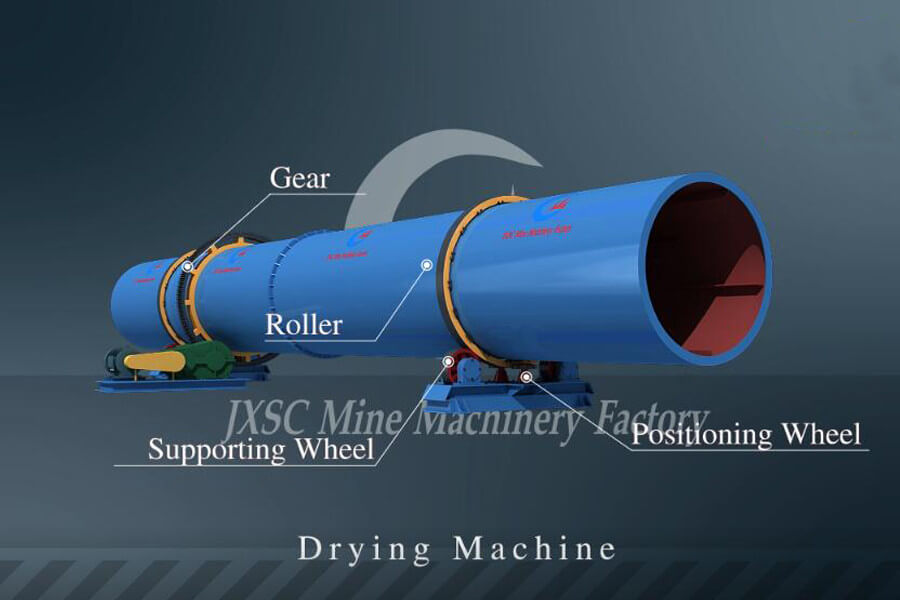We were established as the most specialized mineral processing equipment company since 1985.
Rotary dryer is a very wide range of drying equipment. Our rotary dryer equipment has large-scale specifications, diversified structural forms, energy saving and automation, and has a wider range of applications.


The rotary dryer is a kind of dryer for processing a large number of materials. It is mainly used in mineral processing, building materials, metallurgy, the chemical industry, and other departments to dry materials with a certain humidity or particle size. The rotary dryer has strong adaptability to materials and can dry various materials. It is widely used in the drying of slag, clay, coal powder in the building materials industry or the metallurgy industry, and in leaching slag from the metal beneficiation industry.
In the rotary dryer, according to the flow direction of the material and the hot gas, there are two types: forward flow type and counter flow type. When selecting the forward and reverse flow operation of the dryer, it should be considered comprehensively according to the characteristics of the material, particle size, final moisture requirement of the material, and the layout of the workshop. In cement plants, both methods of operation are used, and most of them are downstream operations.
1. High thermal efficiency
Adopting the downstream drying method, the material and the heat source air flow enter the drying equipment from the same side, the outlet temperature of the dryer is low, and the thermal efficiency is high.
2. Energy saving and consumption reduction, high drying efficiency
The rotary dryer adopts a high-efficiency radiator and is equipped with a reasonable air duct so that the hot air can directly contact the material, which greatly improves the drying efficiency of the material and saves energy. The large-area lint collection net is not easy to cause lint blockage, protects the smooth flow of the air duct, and improves the drying effect.
3. Less component wear
The drum is made of stainless steel bright plate with excellent heat resistance, and the inner wall is smooth, which can reduce the material’s wear on the dryer’s inner wall. The whole machine has strong anti-overload capability, the cylinder runs smoothly, and it has high reliability.
4. High degree of automation
Computer automatic control is adopted, the degree of drying mechanization is high, the production capacity is large, and it can run continuously. And according to the drying requirements, different drying temperatures and drying times can be configured.
When the bottom of the dryer equipment reaches 400°C-800°C, the material is fed from the feed port by the elevator. It is dispersed and broken under gravity, and the dispersion device is evenly distributed inside the dryer to flow. The hot gas is generated by the lower hot blast stove, moves from bottom to top, contacts with the material, and transfers heat to the material through heat conduction, convection, radiation, and other ways, so that the temperature of the material continues to rise, the water is continuously evaporated, and finally meets the moisture content. The required materials are discharged from the lower outlet, and the fan draws out the gas with water vapor through the chimney.

Specifications (diameter*length)(m) | Cylinder Volume(m³) | Capacity (t/h)
| Installation Slope (%) | Higher Intake Air Temperature(℃) | Main Motor(kw) | Total Weight (t) |
Φ 1.2×8 | 9 | 1.9-2.4 | 3-5 | 700-800 | 7.5 | 9 |
Φ1.2 ×10 | 11.3 | 2.4-3 | 3-5 | 700-800 | 7.5 | 11 |
Φ 1.5×12 | 21.2 | 4.5-5.7 | 3-5 | 700-800 | 15 | 18.5 |
Φ 1.5×14 | 24.7 | 5.3-6.6 | 3-5 | 700-800 | 15 | 19.7 |
Φ1.5×15 | 26.5 | 5.7-7.1 | 3-5 | 700-800 | 15 | 20.5 |
Φ 1.8×12 | 30.5 | 6.5-8.1 | 3-5 | 700-800 | 18.5 | 21.5 |
Φ 1.8×14 | 35.6 | 7.6-9.5 | 3-5 | 700-800 | 18.5 | 23 |
Φ 2.2×12 | 45.6 | 9.7-12.2 | 3-5 | 700-800 | 22 | 33.5 |
Φ 2.2×14 | 53.2 | 11.4-14.2 | 3-5 | 700-800 | 22 | 36 |
Φ 2.2×16 | 60.8 | 13-16.2 | 3-5 | 700-800 | 22 | 38 |
Φ 2.4×14 | 63.3 | 13.5-16.9 | 3-5 | 700-800 | 37 | 45 |
Φ 2.4×18 | 81.4 | 17.4-21.7 | 3-5 | 700-800 | 37 | 49 |
Φ 2.4×20 | 90.4 | 19.3-24.1 | 3-5 | 700-800 | 45 | 54 |
Φ 2.4×22 | 99.5 | 21.2-26.5 | 3-5 | 700-800 | 45 | 58 |
Φ 2.6×24 | 127.4 | 27.2-34 | 3-5 | 700-800 | 55 | 73 |
Φ 3×20 | 141.3 | 30.1-37.7 | 3-5 | 700-800 | 75 | 85 |
Φ 3×25 | 176.6 | 37.7-47.1 | 3-5 | 700-800 | 75 | 95 |
Φ 3.2×25 | 201 | 42.9-53.6 | 3-5 | 700-800 | 90 | 110 |
Φ 3.6×28 | 285 | 60.8-76 | 3-5 | 700-800 | 160 | 135 |
A rotary dryer is a type of industrial dryer used to reduce or minimize the moisture content of the material it is handling by bringing it into contact with a heated gas.
The factors that affect the drying rate of the dryer are as follows:
Our dryer machine is suitable for drying various kinds of materials like coal, silica sand, river sand, minerals etc.
Material feeding size should be controlled less than 25mm
Rotary dryers can use various kinds of heating sources like electricity, diesel, natural gas, biomass fuel etc. Using electricity is not economical, diesel and gas are the most used and most cost-effective.
Moisture content can be 2% to 5% after drying.
The dryer is one of the larger and heavier drying equipment, so the machine should be installed on a solid foundation and kept level to prevent the equipment from working due to improper site selection and uneven foundation of the installation location. When there is a large vibration, it will affect the drying efficiency and the service life of the dryer. Before starting up, check whether all bearings of the equipment are injected with lubricating oil, and replenish lubricating oil in time after the equipment is shut down. Good lubrication has a great relationship with the life of the bearing, it directly affects the service life and operating rate of the machine, so the injected lubricating oil must be clean and the seal must be good.
A full set rotary dryer including below items: 1. Cylinder body; 2. Front roller ring; 3. Rear roller ring; 4. Gear; 5. Block roller; 6. Drag roller; 7. Pinion; 8. Discharge part; 9; Lifting plate; 10. Reducer; 11. Motor; 12. Hot air duct, 13. Feeding chute; 14. Furnace body. In addition, gas generator, combustion chamber or dryer matching hoist, belt conveyor, quantitative feeder, cyclone dust collector, induced draft fan etc can be designed according to user needs.
The material such as river /silica sand is sent to the hopper by a belt conveyor or a bucket elevator, and then enters the feeding end through the feeding pipeline through the feeding machine of the hopper. The inclination of the feeding pipeline should be greater than the natural inclination of the material, so that the material can flow into the dryer smoothly. The dryer drum is a rotating cylinder slightly inclined to the horizontal. The material is added from the higher end, the heat carrier enters from the low end, and is in countercurrent contact with the material, and some heat carrier and material flow into the cylinder together. With the rotation of the cylinder, the material runs to the bottom end by gravity. During the forward movement of the wet material in the cylinder, the heat is directly or indirectly obtained from the heat carrier, so that the wet material is dried, and then sent out through a belt conveyor or a screw conveyor at the discharge end.
We provide the best mine processing solution in the industry. We design our products with performance and efficiency, trusted over the years and recognized by many countries. Let’s get you started.

Copyright © 2022, JXSC All rights reserved.
Privacy Policy
Terms & Conditions

